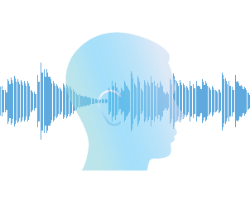Environmental Noise Guidelines for the European Region

The WHO Environmental Noise Guidelines for the European Region provide guidance on protecting human health from harmful exposure to environmental noise. They set health-based recommendations on average environmental noise exposure of five relevant sources of environmental noise. These sources are: road traffic noise, railway noise, aircraft noise, wind turbine noise and leisure noise.
The Environmental Noise Guidelines aim to support the legislation and policy-making process on local, national and international level. The WHO guideline values are public health-oriented recommendations, based on scientific evidence of the health effects and on an assessment of achievable noise levels.
They are strong recommendations and as such should serve as the basis for policy-making processes. It should be recognized that in that process additional considerations of costs, feasibility, values and preferences also feature in decision-making when choosing reference values such as noise limits for a possible standard or legislation.
Compared to previous WHO guidelines on noise, there are five significant developments in the 2018 version:
- stronger evidence of cardiovascular and metabolic effects of environmental noise;
- inclusion of new noise sources, namely wind turbine noise and leisure noise, in addition to noise from transportation (aircraft, rail and road traffic);
- use of a standardized approach to assess the evidence;
- the systematic reviews of evidence define the relationship between noise exposure and risk of health outcome; and
- use of long-term average noise exposure indicators to better predict adverse health outcomes, compared to short-term noise exposure measures.
The development process of the current guidelines adhered to a new, rigorous, evidence-based methodology. Two independent groups of merited experts from the environmental noise community were instrumental in their development. A guideline development group was appointed to define the scope and key questions of the guidelines, and developed the recommendations based on the distilled evidence provided by the systematic review team. In addition, an external review group provided valuable comments, whilst the WHO steering group oversaw implementation of the project.
The guidelines are underpinned by eight peer-reviewed systematic reviews of the pertinent literature in order to incorporate the significant research since the publication of the WHO Night Noise Guidelines for Europe in 2009. The eight systematic reviews were based on several health outcomes – cardiovascular and metabolic effects, annoyance, effects on sleep, cognitive impairment, hearing impairment and tinnitus, adverse birth outcomes, and quality of life, mental-health and well-being – and the effectiveness of interventions in reducing noise exposure and health impacts.



